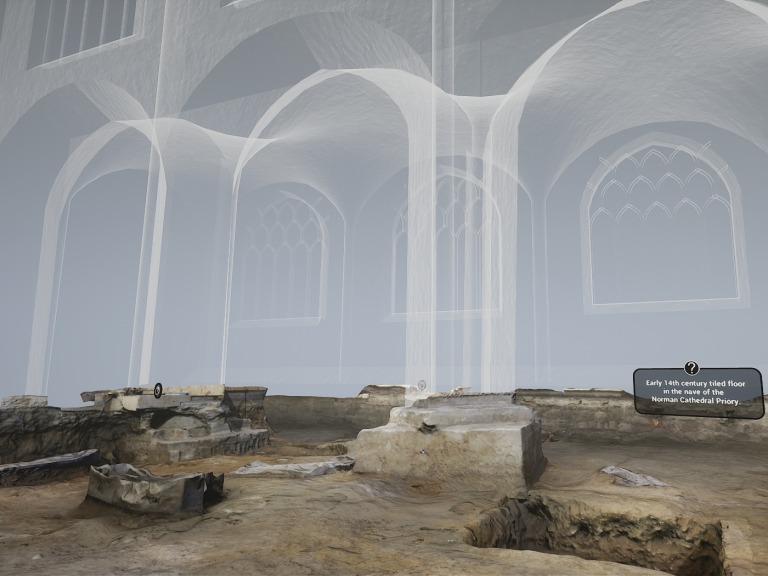For the last year and a half, Wessex Archaeology, in conjunction with The Bath Abbey Footprint Project, has been excavating within and to the south of Bath Abbey. I have been fortunate enough to be part of the archaeological team excavating at this prestigious UNESCO World Heritage site.
We have unearthed an astonishing array of finds and features, including Roman and Saxon structures, Norman and high medieval sculpture, part of a Roman tessellated floor, ‘devil coins’, and even an intact fragment of the late Saxon cemetery that included three rare charcoal burials.
Below the Abbey floor, there were broken monumental marble sculptures, lead coffins, beautifully carved re-used Norman stonework, and hundreds of fragments of decorated Jacobean plaster-work.
The plaster is derived from a magnificent ceiling, which was erected above the nave and its aisles in the early 17th century. The ceiling was demolished by Sir George Gilbert Scott in the 1860s and replaced with stone fan vaulting to match the Tudor vaulting at the east end of the Abbey.
In Phase I, we discovered large fragments of the barrel-vaulted plaster rib-work which spanned the nave. Extraordinarily, several of these fragments still bore traces of paint-work. They had been painted with a technique known as tromp I’oeil. This is a technique used to create an illusion: in this case, the plaster had been painted to imitate marble. Along with these rib fragments, a great many plaster flower rosettes were also discovered.
In Phase II, we excavated below the north aisle of the nave. We immediately began to unearth more Jacobean plaster ceiling fragments and rib-work. Apart from the rosettes, these fragments differed from the ones we discovered in Phase I. The rib-work fragments were on a smaller scale, narrower, less convex and more delicate. Among these rib-work fragments we also found an astonishing array of decorated plaster-work, including acanthus leaves, flowers, pointed and rounded bosses, fleurs-de-lys, and fabulous lion’s head masks.
A work colleague mentioned that there was an intact Jacobean ceiling in an old pub in Bath, and I thought it would be interesting to locate it to see if there were any similarities with the fragments we had been finding. One of my duties while working at Bath Abbey was to remember to get the chips for our ‘Chip-Friday’ lunch. While walking along Westgate Street, on the way to the chip shop, I happened to look up as I passed The Grapes, and there, through an open first floor window, I noticed what looked like a Jacobean ceiling. I went in and inquired whether it was possible to go up and have a look.
On entering the room, and to my utter amazement, I immediately recognized rounded and pointed bosses, acanthus leaves and lion head masks which looked identical to the fragments we had been discovering at Bath Abbey.
Image Courtesy of Ellie at the Grapes
This rare and exciting discovery has inspired me to research these two similar 17th-century ceilings, to try and uncover the history surrounding them, and to try to determine if they could have been created by the same maker.
By Chris Hambleton, Archaeologist

